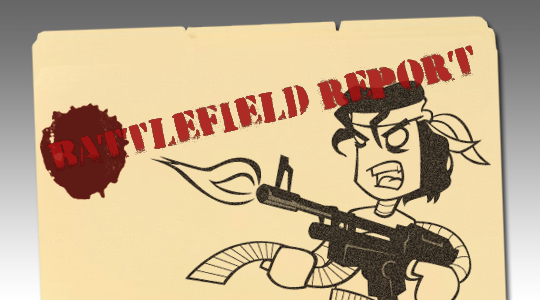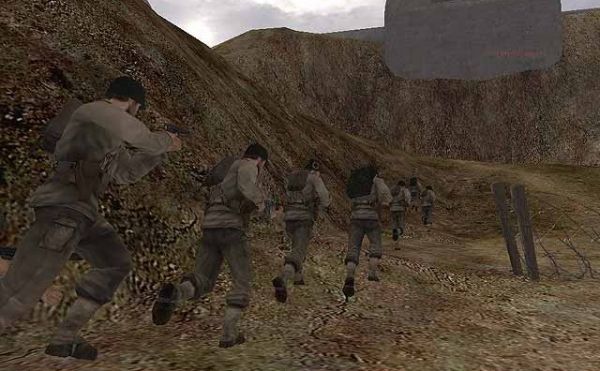

July 16, 1943
Dearest Mary Louise,
It has been nearly a year since I last wrote you, I know that. I'm so sorry to keep you waiting for so long. I've seen things you wouldn't believe...no one would. The asylum in Berlin was just the beginning of a horror story that will haunt me for years to come. We need to have a meeting with Father Colmes when I get back.
For my services in Berlin and the "Swamps of Death" I was given the chance to chose one more theater of operations before I come home. I chose to go with a Marine by the name of Tank Dempsey, who I've made friends with over the last few months; we're in the Pacific, not too far from our last assignment. If you remember, I spent some time training at RAF Oakley last year before being stationed at Peleliu; well, they're letting me fly in combat planes out here near Guadalcanal.
The Imperial Japanese Army has been dive-bombing all week, so we're using F4U Corsairs to fight back. Every time I get up to 300 feet high and see the sun hit the water, I think of you. It's hard to concentrate in the noisy cockpit, but I like to stick that picture you gave me onto the fuel gauge -- it calms me down.
I need to get some rest now. I can hear the Japanese Zeroes buzzing the Marines down at the fuel depot, and we'll be rousted out soon.
Love always,
Billy
Battlefield 1942

While certainly not the first game to feature player-controlled vehicles in a first- or third-person shooter setting, Battlefield 1942 put drivable and flyable ordnance on the map for multiplayer gamers around the world. It was followed quickly by games like Joint Operations: Typhoon Rising and Star Wars Battlefront, which showed the industry that the "Battlefield formula" could successfully extend itself to other genres. The use of control points and reinforcement tickets has been recycled in games from SOCOM 3: U.S. Navy SEALs to Lord of the Rings: Conquest to Ratchet and Clank: Deadlocked.
After providing additional support for Battlefield 2 in the form of expansions and patches, DICE introduced their Frostbite engine via Battlefield Bad Company, adding destructibility to the environment and filling the screen with impressive effects. Bad Company brought along a mutation of Battlefield 2's extremely detailed progression and rank system. Satisfied that Bad Company was popular enough to begin work on a sequel, DICE started hammering on Bad Company 2, in the meantime offering a more casual, browser-based approach: Battlefield Heroes, a free-to-play game with unique visuals and certain simplifications (such as the lack of damaging friendly fire) is currently in beta.
So what do you get when you lump together the maps and vehicles of Battlefield 1942, the stat tracking and progression of Battlefield 2, the destructible environment and graphics engine of Battlefield Bad Company, and the slightly-less-hardcore simplified feel of Battlefield Heroes? You get Battlefield 1943, a balanced cacophony of all good things Battlefield.
Like in every other team-based game, the key to victory in Battlefield 1943 is teamwork. Everyone on both teams starts out by choosing a unique class and their own method of death and destruction. You can attack or defend from air, land, or sea...if your team wins, you either coordinated properly or just got the luck of the draw. Granted, one team out of two wins every time, so your odds are already pretty decent; but if you practice cooperative teamwork, you can dominate. This is serious business, folks.
Battlefield 1943
I read an interesting airplane guide on the official EA forums today, one that took the time to remind everyone that airplanes are not just machine gun turrets with wings; my favorite eye-opening tip favored the bail-out approach, encouraging aviators to ditch their plane for a direct vertical access to unoccupied control points. While this may seem like a waste of a perfectly good airplane, the value of a captured flag is far greater. Planes respawn; control points do not. It's this mentality that puts the co-op back into team-based games.
And let's face it: airplanes are the star of the show this time around. Easy to learn and difficult to master, aerial fighters play a pivotal role in Battlefield 1943. However: just because you can't shoot down the enemy's air support before parachuting in to capture a flag doesn't mean you can't dish out for the team. If you're a sharpshooter by nature and you're going to climb to a sniper perch, use your scope to mark enemies on the radar in between targets. A distant, well-placed tank may not capture the control point, but may be able to provide some good 6-pound-shell cover fire. Let a couple of buddies jump into your Jeep before you take off; you'll never know how handy a vehicle-mounted .50-caliber machine gun can be if you don't bring one along. I played a few rounds of the recently-unlocked Air Superiority mode on Coral Sea, a map designed for airplane standoffs. Of course, everyone who joins these matches expects to see how many enemy planes they can shoot down, but in order to win the round I found myself manning our aircraft carrier's port side flak cannon. Another teammate got the bright idea to do the same on the starboard side, and we soon frustrated enemy pilots to the point that they were lining up in our sights just for one chance to avenge their sudden losses; a chance that they never got, thanks to two random teammates who decided to trade in their wings for some ingenuity and a spirit of teamwork. After that round, I received three friend requests -- do you know why? Because everyone likes a cooperative team player.
All of these are examples of what should have stuck when Battlefield 1942 first took off in 2002, but unfortunately games these days too often reward the Love Wolves of the internet, expecting co-op to be contained within a specific genre. With Co-Optimus and its passionate following, we may be able to break that trend yet. See you on the Battlefield!
Battlefield: Bad Company 2 -- we're hoping for a co-op campaign!